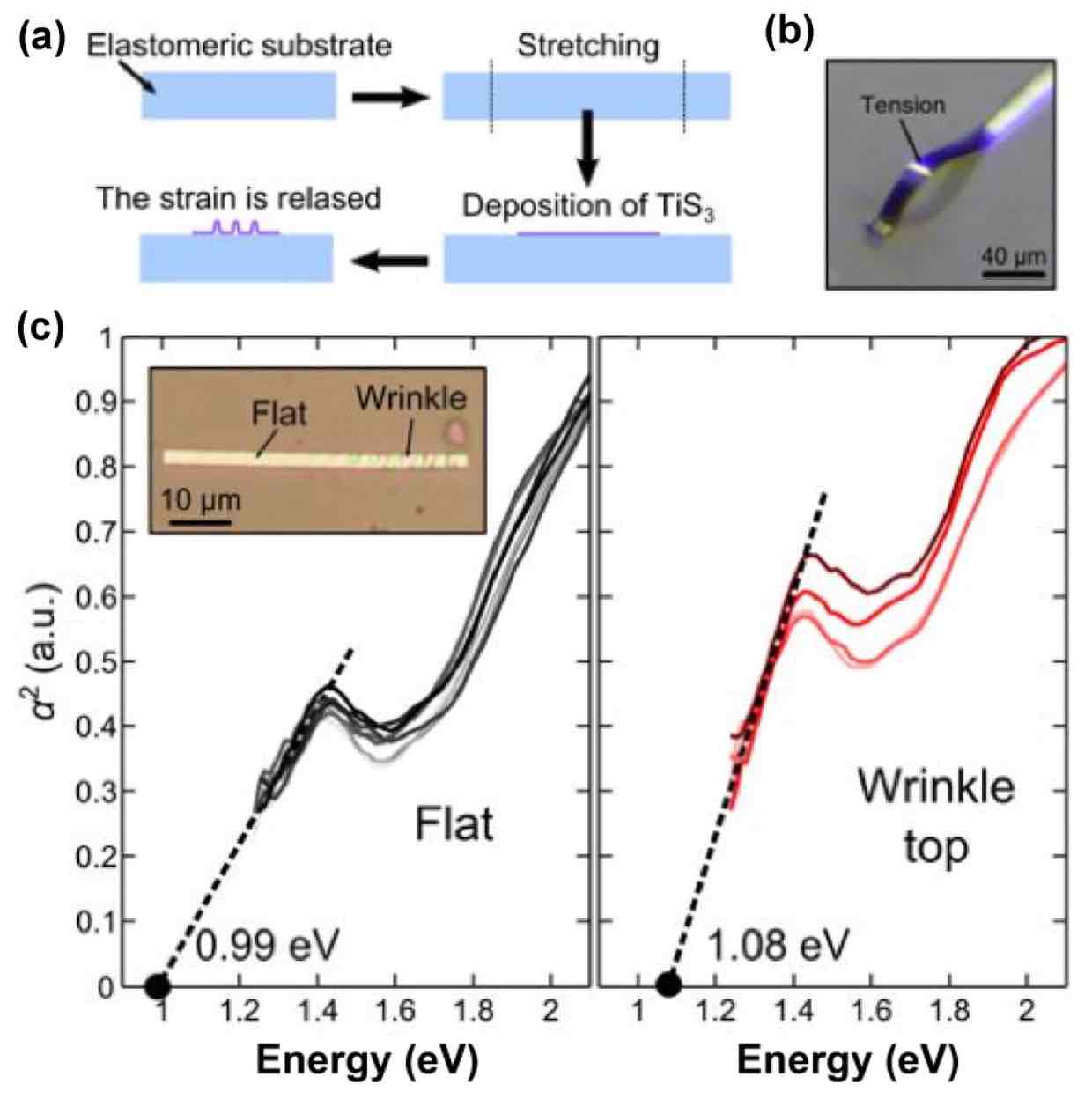By combining ab initio calculations and experiments, we demonstrate how the band gap of the transition metal trichalcogenide TiS3 can be modified by inducing tensile or compressive strain. In addition, using our calculations, we predicted that the material would exhibit a transition from a direct to an indirect band gap upon application of a compressive strain in the direction of easy electrical transport. The ability to control the band gap and its nature could have a significant impact on the use of TiS3 for optical applications. We go on to verify our prediction via optical absorption experiments that demonstrate a band gap increase of up to 9% (from 0.99 to 1.08 eV) upon application of tensile stress along the easy transport direction.

By combining ab initio calculations and experiments, we demonstrate how the band gap of the transition metal trichalcogenide TiS3 can be modified by inducing tensile or compressive strain. In addition, using our calculations, we predicted that the material would exhibit a transition from a direct to an indirect band gap upon application of a compressive strain in the direction of easy electrical transport. The ability to control the band gap and its nature could have a significant impact on the use of TiS3 for optical applications. We go on to verify our prediction via optical absorption experiments that demonstrate a band gap increase of up to 9% (from 0.99 to 1.08 eV) upon application of tensile stress along the easy transport direction.
